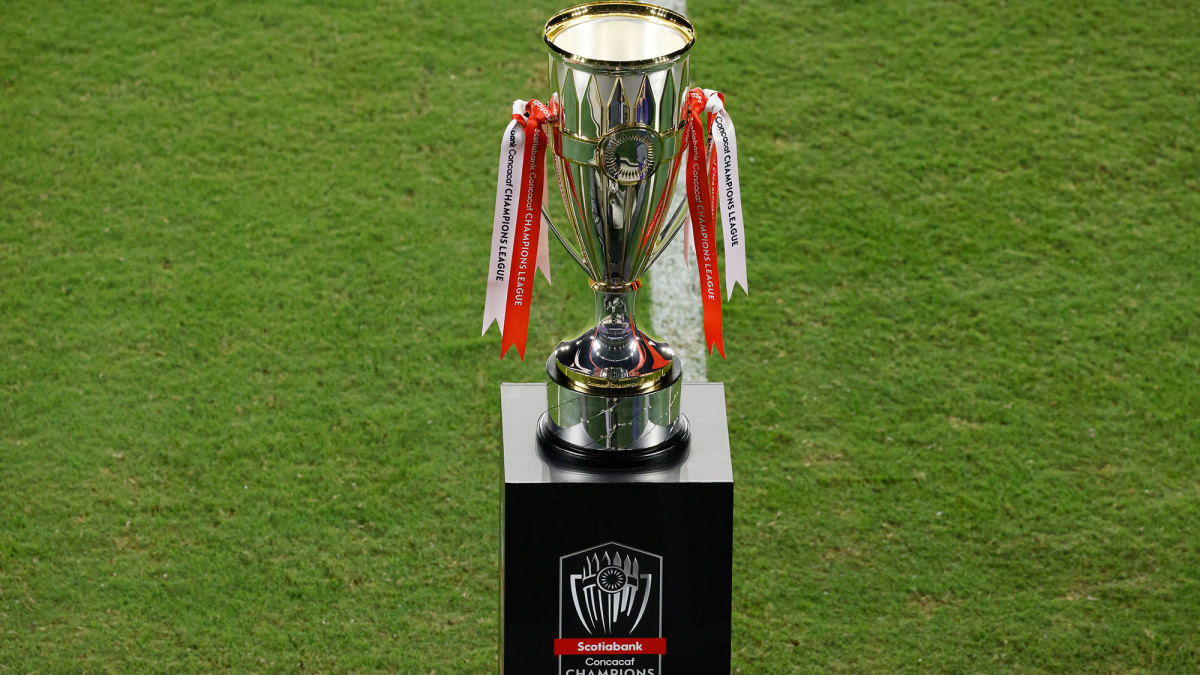With Concacaf Mulling Champions League Growth, Here's What a New CCL Could Look Like

Although contested in less-than-ideal conditions and marred, again, by antics and controversy, the conclusion of the 2020 Concacaf Champions League nevertheless demonstrated the competition’s potential.
The clubs and players involved wanted to win. MLS teams showed that, at full fitness and on neutral ground, they were equal to their Liga MX counterparts, taking three of the five games between the leagues inside the Orlando bubble. And the final itself between Los Angeles FC and Tigres UANL produced a riveting 90 minutes of soccer, during which the third-year MLS side came close to upending Mexico’s team of the decade.
Concacaf is hoping to build on those trends and match its fellow continental confederations with a more relevant and robust club championship. Pre-pandemic, the Concacaf Champions League wasn’t really a league at all. Rather, it was a bracketed tournament featuring home-and-away ties that lasted only three months, and its preseason kickoff was brutal for MLS entrants.
Before that, Concacaf ran a group stage from 2008 through 2016, but it established next to no traction. Liga MX and, later on, MLS clubs, too often were untroubled during the group stage, and matchups against Central American and Caribbean teams typically failed to interest fans and media. It was a self-defeating slog.
Concacaf had to take a step back in order to prepare for a leap forward. In 2023, it expects to be ready.
“For football to be relevant in our side of the world, we have to be relevant internationally. National teams that’s clear where we need to be relevant—at the World Cup. But where we need to be relevant at the club level is in our Champions League and then obviously into the Club World Cup,” Concacaf president Victor Montagliani told Canada’s TSN ahead of Tuesday’s CCL Final.
“We had historically put more emphasis on a domestic cup rather than international football and I don’t know if that was because of fear, or lack of knowledge, or both,” he continued. “But now you can see the attitude that the MLS clubs now have coming into our Champions League is significantly different just in the last three years. Even with the Mexican teams, I mean, Tigres are so hungry for this because this is going to be their fourth final. And now the Central American teams, you can see Olimpia’s performance was very good. And so I think now we’re starting to get it culturally here.”

The CCL and its feeder tournament for Central American, Caribbean and Canadian Premier League clubs, the Concacaf League, are expected to continue in their present form next spring and in 2022 (with the welcome addition of VAR in CCL). The Columbus Crew, Philadelphia Union, Portland Timbers and Atlanta United will represent the USA next year, while Canada’s entrant will be determined by a playoff between Toronto FC and Hamilton Forge.
The leap will come in 2023 with more teams, more games and the reintroduction of a group stage. But this will be a group stage with a twist. Sports Illustrated understands that Concacaf is leaning toward regionalizing the round, thus ensuring that MLS and Liga MX clubs are facing off from the start.
The details—number of entrants, dates, etc.—remain a work in progress. But the philosophical approach appears to have been established. Other continents have champions leagues that run throughout the full season or calendar year, with a group stage followed by knockouts. That’s where Concacaf intends to go. To avoid the pitfalls of its earlier stab at a group stage, however, it’s leaning toward treating them like FIFA uses World Cup qualifiers—pitting local rivals against each other, with different regions sending different numbers of teams into the later rounds. So in Concacaf’s case, there will be North American groups, Central American groups and Caribbean groups. The knockout-round proportions likely will be similar to what they are now—nine from North America, 5-6 from Central America and 1-2 from the Caribbean.
Currently, Mexico and the USA qualify four teams each to the CCL, while Canada gets one or two, depending on the CPL champion’s performance in the Concacaf League. Expect those numbers to grow. So, for example—and this is speculation—the three North American countries could see four groups of three or four teams each start out in the spring, with the top two finishers and one wild card team progressing to the round-of-16. There, they’d be drawn against the survivors from the Central American and Caribbean group stages. The future of the Concacaf League is uncertain.
Concacaf used four-team groups in 2008-11 and three-team groups in 2012-16. It will have to be in close contact with MLS and Liga MX regarding scheduling and dates. There also might be some compromise required, as the two leagues remain committed to their own partnership that includes the annual Campeones Cup and Leagues Cup tournaments. Both were canceled in 2020. The Leagues Cup was intended to serve as a secondary international competition analogous to the UEFA Europa League and Copa Sudamericana, with the top four teams in each MLS conference that didn’t qualify for the CCL earning a berth.
MLS and Liga MX have some incentive to cooperate. A larger, more relevant CCL would offer economic benefits to its members, while better preparing them for a Club World Cup that’s expected to expand significantly in the coming years. Concacaf teams have faired poorly at the current CWC, winning just four bronze medals in 15 years.
“We have an opportunity to actually get it right and get it correct, learning from others but also emphasizing how big these rivalries are, whether it’s a Canadian club versus an MLS club, MLS versus Liga MX, Honduran versus MLS,” Montagliani told TSN. “These are rivalries that I think are just dying to explode in our region, and I think the Champions League is where you’re going to get that.”
